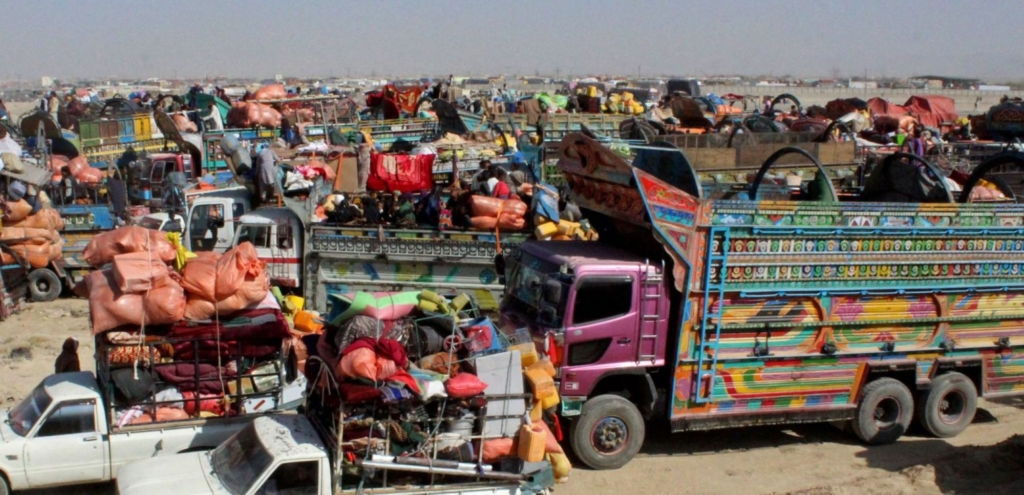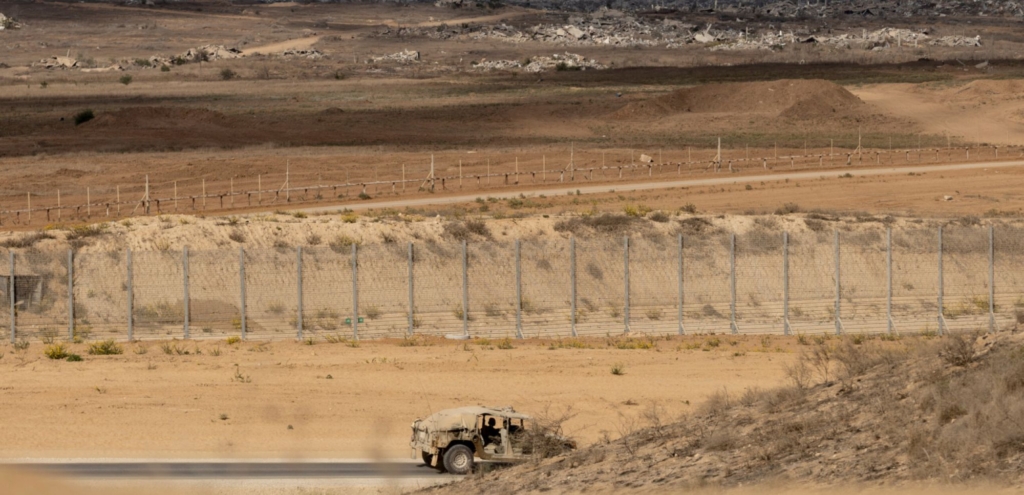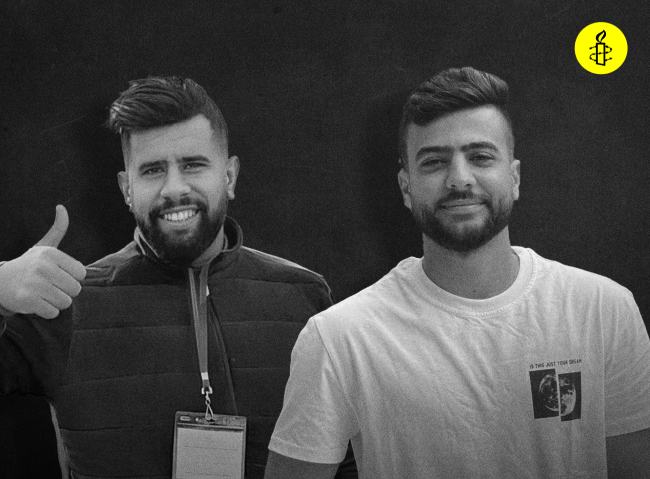Since the beginning of the massive Peru protests in different areas of the country in December 2022, the Army and National Police of Peru (PNP) have unlawfully fired lethal weapons and used other less lethal weapons indiscriminately against the population. This repression of the protests constituted widespread attacks, especially against Indigenous people and campesinos (rural farmworkers), Amnesty International said today, upon presenting the initial findings of its research in the country.
During the investigation in Ayacucho, Andahuaylas, Chincheros and Lima between 29 January and 11 February, Amnesty International received information regarding 46 cases of possible human rights violations and documented 12 cases of deaths from the use of firearms. The organization also received information on serious shortcomings in the investigation of human rights violations and the administration of justice.
- Take action: Tell Peru to end use of excessive force against protesters
- Related: Amnesty International deploys crisis response team to investigate serious human rights violations in Peru
“With a total of 48 people dead from state repression, 11 deaths from road blockades and one policeman killed, as well as hundreds injured in a tragic period of state violence, the Peruvian authorities have allowed the excessive and lethal use of force to be the government’s only response for more than two months to the clamour of thousands of communities who today demand dignity and a political system that guarantees their human rights,” said Erika Guevara-Rosas, Americas director at Amnesty International.
In a context of great political uncertainty, the first expressions of social unrest emerged from several of Peru’s most marginalized regions, such as Apurímac, Ayacucho and Puno, whose mostly Indigenous populations have historically suffered from discrimination, unequal access to political participation and an ongoing struggle to access basic rights to health, housing and education. Protests soon spread to the capital, Lima, and other parts of the country.
Amnesty International conducted an analysis based on data from the Peruvian Ombudsman’s Office, using the concentration of protests and the number of deaths due to repression as parameters. It has found that the number of possible arbitrary deaths due to state repression is disproportionately concentrated in regions with largely Indigenous populations. This is despite the fact that the level of state violence during the demonstrations was practically equal to that recorded in other places, such as Lima, for example. While the regions with the majority of Indigenous populations represent only 13% of Peru’s total population, they account for 80% of the total deaths registered since the crisis began. The evidence suggests that the authorities acted with a marked racist bias, targeting populations that have historically been discriminated against.
In Juliaca, in the Puno region, where a high percentage of the Indigenous population is concentrated, 17 people were killed on 9 January in the context of police repression. The Attorney General’s office itself declared that the deaths were caused by firearm projectiles, provoking one of the most tragic and disturbing events in the whole country. At the beginning of this month, the government decreed a state of emergency in seven regions, with Puno being the only region that has remained under military control.
‘The systemic racism ingrained in Peruvian society and its authorities for decades has been the driving force behind the violence used to punish communities that have raised their voices.’
Erika Guevara-Rosas, Americas Director, Amnesty International
During its investigation, Amnesty International interviewed multiple state officials, including representatives of the security forces, prosecutors and officials from the Ombudsman’s Office, as well as businesspeople, journalists, civil society organizations, lawyers, family members and eyewitnesses. The organization’s Crisis Evidence Lab also verified 36 pieces of photographic and video material, of which at least 11 point to excessive and sometimes indiscriminate use of lethal and potentially lethal force by the authorities.
“It’s no coincidence that dozens of people told Amnesty International they felt that the authorities treated them like animals and not human beings. The systemic racism ingrained in Peruvian society and its authorities for decades has been the driving force behind the violence used to punish communities that have raised their voices,” said Erika Guevara-Rosas.
Arbitrary killings and possible extrajudicial executions
Despite the fact that international human rights standards prohibit the use of firearms with lethal ammunition to control demonstrations, the information gathered suggests that in multiple cases the police and army resorted to this as one of their primary methods of dispersing demonstrations, even when there was no apparent risk to the lives of others.
The protests were mostly peaceful but there were certain instances of targeted violence by some demonstrators, including launching stones with homemade slingshots and fireworks. However, the available evidence indicates that the police and army fired bullets indiscriminately and in some cases at specific targets, killing or injuring bystanders, protesters and those providing first aid to injured people.
Of the 12 emblematic fatalities that Amnesty International has documented so far, all the victims appeared to have been shot in the chest, torso or head, which could indicate, in some cases, the intentional use of lethal force.
Jhonathan Erik Enciso Arias, an 18-year-old student, volleyball player and the son of Quechua-speaking parents, died on 12 December from lethal ammunition that struck him while he and his friends were on the local hill of Huayhuaca, which overlooks the Andahuaylas town center. Dozens of citizens had gathered at the site to observe and film the protest by locals after the police used tear gas to break up a funeral procession for two young men who had died the previous day at the Andahuaylas airport.
Videos and eyewitness accounts suggest that several police officers fired bullets from the rooftop of a building in front of the hill that day. State officials confirmed to Amnesty International the presence of police on the rooftop and the organization has verified footage showing that John Erik was not using violence against the police when he was killed. Another young man, Wilfredo Lizarme, 18, died in similar circumstances. These cases could constitute extrajudicial executions.
Leonardo Hancco Chacca, a 32-year-old heavy machinery operator, died after soldiers aimed and fired at demonstrators near the Ayacucho airport on 15 December, according to multiple testimonies and images obtained by IDL-Reporteros. Witnesses indicated that the armed forces fired live rounds for at least seven hours in and around the airport, at times chasing demonstrators or shooting in the direction of those helping the wounded. In total nine young men died, allegedly as a result of the military action, that day.
Injuries and damages to physical integrity
Since the crisis began, more than 1,200 people have been injured in the context of protests and 580 police officers have been wounded, according to figures from the Ministry of Health.
In addition to bullet wounds, from analyzing images Amnesty International has identified numerous injuries from pellet rounds. This imprecise ammunition, which releases several projectiles with every shot, is not at all suitable for control of demonstrations.
In one case, a bullet pierced the arm of a young man while he was providing first aid on 15 December in Ayacucho. The young man said he was shot by soldiers who were aiming directly at him and protesters in the area. More than 60 people were injured in Ayacucho that day.
In Lima, the evidence collected indicates that the heavy use of potentially lethal munitions, such as pellets, as well as tear gas – which can also be lethal when used improperly or when fired from a launcher directly at the body – caused the death of one person, who was hit by a gas cannister in the head, and dozens of injuries.
In Juliaca, photojournalist Aldair Mejía was hit by pellets in his right leg, causing serious injury, while he was covering the demonstrations and the violent repression by the National Police on 7 January.
Slow and under-resourced investigations
Amnesty International spoke to victims and gathered official information that indicated that, although the Attorney General’s Office had taken some important action, almost two months after the events, key steps in the investigations, such as the completion of certain expert reports or the collection of testimonies, had still not been taken. In some cases, the chain of custody of certain evidence had not been preserved, which would undermine the possibility of genuinely impartial and exhaustive investigations.
The organization identified cases where the first stages of investigations did not accurately reflect the facts, such as the case of Beckham Romario Quispe Rojas, an 18-year-old soccer player and coach, and the son of a Quechua-speaking campesino, who died during a protest in Huancabamba, Andahuaylas, on a disused airstrip. The autopsy did not state the kind of projectile that caused his death and was delivered a month after the events.
“The Attorney General’s Office must urgently free up the time and resources required for the investigation of serious human rights violations and possible crimes under international law. Delaying and neglecting this critical work contributes to a climate of impunity that only encourages such acts,” said Marina Navarro, executive director of Amnesty International Peru.
Stigmatization of protesters undermines access to justice
The authorities, from the highest level, have maintained a discourse of stigmatization against those who demonstrate, claiming without evidence that they have links to “terrorism” and criminal groups, in order to delegitimize their demands and justify violations of their human rights.
The organization also warns that the authorities have continuously attacked independent and international media. Amnesty International has documented several cases of serious violations of the integrity of journalists while exercising their right to freedom of expression.
‘When the state’s discourse seeks to criminalize those who demonstrate, society as a whole loses.’
Marina Navarro, Executive Director, Amnesty International Peru
The organization interviewed more than 20 people who were injured by tear gas canisters, pellets or bullets during the protests, many of whom were afraid to report their injuries for fear of criminal prosecution. Some of them reported receiving threatening phone calls or being watched by the police.
“When the state’s discourse seeks to criminalize those who demonstrate, society as a whole loses. That’s how arbitrary military and police tactics against the civilian population are justified, freedom of expression is restricted and those who mourn the loss of a loved one are revictimized,” said Marina Navarro.
On 21 January, the police arbitrarily detained dozens of people at the Universidad Nacional Mayor de San Marcos, despite the fact that there were no legal grounds to justify such detentions. In the operation, which lasted several hours and involved more than 500 police officers, a total of 192 people were assaulted and detained, including students, journalists, human rights defenders and members of delegations from other regions of the country who had come to Lima to participate in the demonstrations. The nature of the operation and reports of physical and psychological violence, as well as verified images, indicate possible cruel, inhuman and degrading treatment.
One person detained during the operation told Amnesty International that officials from the PNP’s Anti-Terrorism Directorate threatened those in their custody that “if [they] continued protesting [they] would put their photos on the wall of terrorists”, referring to the place where people accused of this crime are identified.
During the operation, physical violence was reported at the time of the initial intervention, as well as the indiscriminate detention of passers-by, the denial of access to the defenders, and the unnecessary use of handcuffs. Amnesty International also received reports of the “planting” of supposedly incriminating evidence and the practice of at least one arrest that later did not appear in official records of the operation.
Inequality undermines life-saving services
Peru’s health system is one of the least funded in Latin America and health workers are severely deprived of fair and humane working conditions. Many people told Amnesty International that the overwhelming poverty, lack of services and inequality they suffer were part of the reasons they decided to take to the streets.
Robert Pablo Medina Llanterhuay, a 16-year-old high school student and son of a farmer, was shot dead after witnesses saw him walking among a group of demonstrators with a small Peruvian flag in his hand in the town of Chincheros on 12 December. Police had fired tear gas at close range to disperse a crowd that day and he was shot in the chest. The nearest hospital capable of performing an autopsy was several hours away, meaning family members were unable to access it and buried Robert’s body without it being examined.
Another 15-year-old boy from the town of Pichanaqui, Junín, was seriously wounded by a firearm on 16 December, while walking home from work. However, the lack of primary care led him to visit two hospitals before he was eventually operated on four days later in Lima. Peruvian organizations have counted hundreds of people who have been referred to the capital for the same reason and, in many cases, have faced discrimination and lack of resources.
Preliminary recommendations
On 15 February Amnesty International met with President Dina Boluarte to present to her the initial findings of its investigation, as well as to recommend to her government, all state agencies and the international community a series of actions that should be implemented immediately and with an anti-racist approach:
- A change of tactics in the management of demonstrations is urgently needed. State authorities must end the use of lethal force to disperse protests and avoid using potentially lethal weapons like pellets. Tear gas and other less lethal weapons must only be used in an appropriate and proportional manner.
- The Attorney General’s Office must urgently advance the investigation of those potentially responsible for human rights violations to the highest level, including conducting all necessary investigations promptly and thoroughly and ensuring sufficient resources and personnel for human rights prosecutors. In addition, security conditions for victims and witnesses must be guaranteed.
- The authorities, and especially Peru’s president, must take urgent measures to end the stigmatization of demonstrators. In addition, all branches of government should take timely measures to end structural racial discrimination.
- The authorities must urgently provide support to the families of those killed and injured. Psychological, economic and employment support and reparations for victims must be a priority.
- The international community and human rights protection mechanisms must take all timely and urgent measures to ensure the cessation of repression and accountability of the Peruvian authorities.
“The grave human rights crisis facing Peru has been fueled by stigmatization, criminalization and racism against Indigenous peoples and campesino communities who today take to the streets exercising their rights to freedom of expression and peaceful assembly, and in response have been violently punished. The widespread attacks against the population have implications regarding the individual criminal responsibility of the authorities, including those at the highest level, for their action and omission to stop the repression,” said Erika Guevara-Rosas.
“We reiterate our call on interim President Dina Boluarte and the rest of the state authorities to put an end to the repression, address the legitimate demands of those protesting, and ensure that the state fulfills its obligation to investigate all human rights violations committed by the security forces and bring to justice those found responsible.
URGENT ACTION
PERU: ALARMING DEATH TOLL AMID REPRESSION
Call on Peru to end the violence and seek peaceful solutions























